The Ironbridge Gorge- It’s like going back in time!
If your passion is the Industrial age then surely ‘Ironbridge’ has to be the ‘Mecca’ of the era, and a pilgrimage to the heart of the River Severn Gorge, in Shropshire is a must. Coalbrookdale, Ironbridge, Coalport, Jackfield, and Blists Hill are all symbols of the Industrial Revolution synonymous with the UNESCO World heritage site. I spent three days riding short distances cramming in as many of the museums as I could.
Day 1- Kidderminster to Telford (train) then onto Ironbridge (11 miles)
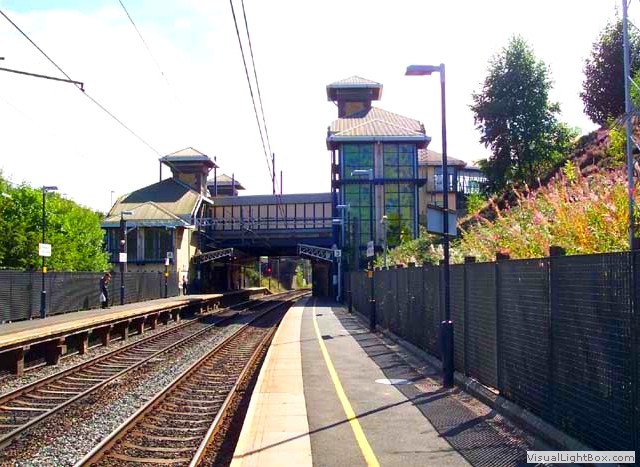 I started off by dropping the car off at Kidderminster station, terminal of the Severn Valley
heritage railway. I was late getting there and for sure I thought I’d missed my main line
connection to Telford, but as luck would have it; there was a broken down train south of
Kidderminster delaying all the morning rail traffic. Only half an hour late, I hopped aboard
the first connection out of Kidderminster heading towards Smethwick Galton bridge. Here two
canals and another main line railway crisscross each other, down the road from here is Galton
Valley Canal Heritage Centre and Chance Glass Works Heritage Trust, but I didn’t have time to
visit these and continued to Wolverhampton to connect with the train to Telford.
I started off by dropping the car off at Kidderminster station, terminal of the Severn Valley
heritage railway. I was late getting there and for sure I thought I’d missed my main line
connection to Telford, but as luck would have it; there was a broken down train south of
Kidderminster delaying all the morning rail traffic. Only half an hour late, I hopped aboard
the first connection out of Kidderminster heading towards Smethwick Galton bridge. Here two
canals and another main line railway crisscross each other, down the road from here is Galton
Valley Canal Heritage Centre and Chance Glass Works Heritage Trust, but I didn’t have time to
visit these and continued to Wolverhampton to connect with the train to Telford.
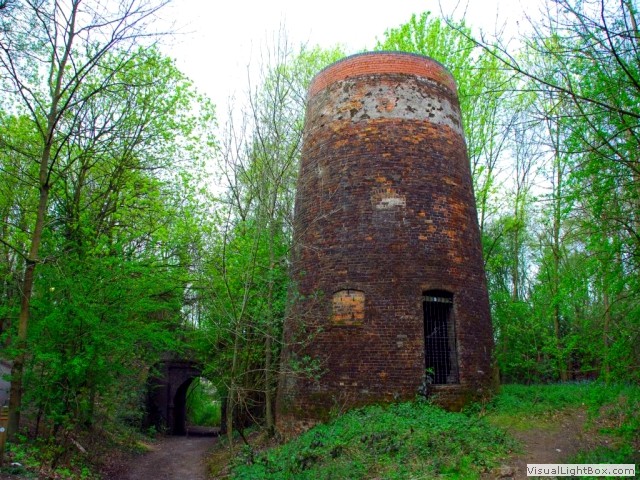 Leaving the train at Telford it was easy to jump onto the ‘Silkin Way’ cycle route, it was
mid-October, and though we didn’t really have a good summer, the trees couldn’t decide whether it
was autumn yet, but there was enough leaves on the path to make it slippery. I passed the
Dawley & Stirchley station platform, and shortly after, the line splits at an old windmill
and I continued south past the old Madeley Market station and onto Blists Hill Victorian village, the
first of my museum stops. I had already emailed
the Ironbridge Trust and asked for a secure place
to put my belongings and bike, unfortunately the reply was a polite ‘tough crap we haven’t got
anywhere’. Despite this, I locked the bike up outside the main doors and bought an annual pass
which gives access to all ten of the gorge museums and then spent three hours in this fantastic
live Victorian museum. As you enter the village the first thing that hits you is the smell of
burning coal and wood. The main street has all the Victorian shops one can imagine, but these
Leaving the train at Telford it was easy to jump onto the ‘Silkin Way’ cycle route, it was
mid-October, and though we didn’t really have a good summer, the trees couldn’t decide whether it
was autumn yet, but there was enough leaves on the path to make it slippery. I passed the
Dawley & Stirchley station platform, and shortly after, the line splits at an old windmill
and I continued south past the old Madeley Market station and onto Blists Hill Victorian village, the
first of my museum stops. I had already emailed
the Ironbridge Trust and asked for a secure place
to put my belongings and bike, unfortunately the reply was a polite ‘tough crap we haven’t got
anywhere’. Despite this, I locked the bike up outside the main doors and bought an annual pass
which gives access to all ten of the gorge museums and then spent three hours in this fantastic
live Victorian museum. As you enter the village the first thing that hits you is the smell of
burning coal and wood. The main street has all the Victorian shops one can imagine, but these
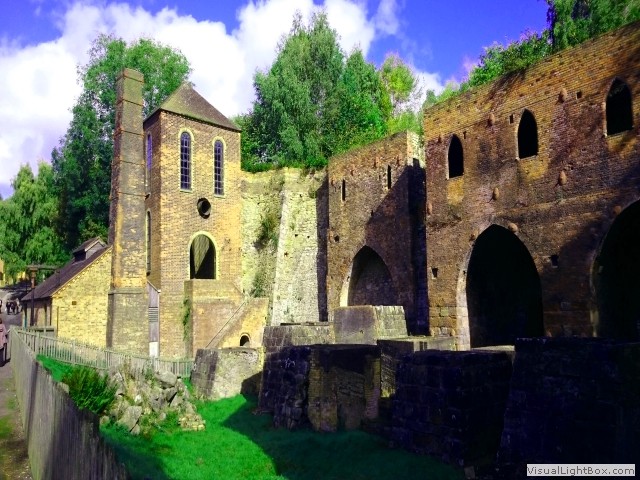 shops are a recreation. In the 18th and 19th centuries, Blists Hill was an industrial region
consisting of blast furnaces operated by the ‘Madeley Wood Company’, the new tourist attraction
has put together a formidable array of Victorian style buildings filled with an emporium of
original artefacts. There is a short section of the Shropshire Canal running across the site
to the Hay Inclined Plane, which transported boats up and down the 63 meter hill from Blists
Hill to Coalport. This is an extraordinary place, well worth a visit.
shops are a recreation. In the 18th and 19th centuries, Blists Hill was an industrial region
consisting of blast furnaces operated by the ‘Madeley Wood Company’, the new tourist attraction
has put together a formidable array of Victorian style buildings filled with an emporium of
original artefacts. There is a short section of the Shropshire Canal running across the site
to the Hay Inclined Plane, which transported boats up and down the 63 meter hill from Blists
Hill to Coalport. This is an extraordinary place, well worth a visit.
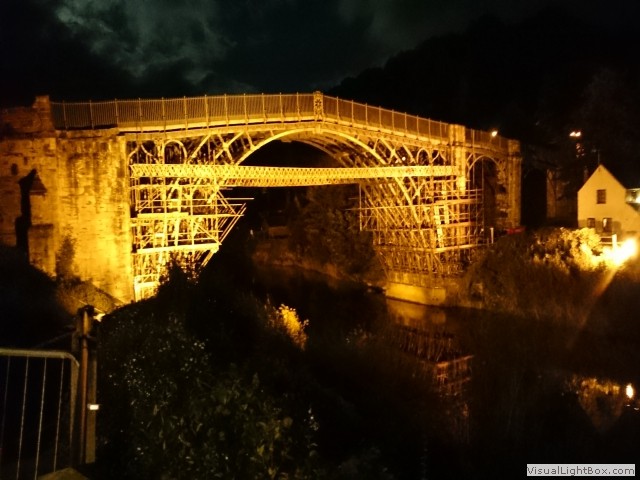 I continued down the hill and crossed the River Severn on the Coalport bridge having a swift
pint of cider in the 18th century Woodbridge Inn. From here it’s onto the Severn Valley way passing
two tile works at Jackfield, but I will visit those tomorrow. Crossing the River Severn again on
the focal point of my tour; ‘Ironbridge’. It opened in 1781, and was the first major bridge in
the World to be made of cast iron. Just down the road is my nights stop at the Swan Taphouse. In
the evening it was a short walk back to the bridge where I visited Restaurant Severn, voted the
best in Shropshire's on Tripadvisor- a superb meal.
I continued down the hill and crossed the River Severn on the Coalport bridge having a swift
pint of cider in the 18th century Woodbridge Inn. From here it’s onto the Severn Valley way passing
two tile works at Jackfield, but I will visit those tomorrow. Crossing the River Severn again on
the focal point of my tour; ‘Ironbridge’. It opened in 1781, and was the first major bridge in
the World to be made of cast iron. Just down the road is my nights stop at the Swan Taphouse. In
the evening it was a short walk back to the bridge where I visited Restaurant Severn, voted the
best in Shropshire's on Tripadvisor- a superb meal.
Day 2- Ironbridge- Coalport- Madeley- Coalbrookdale- Ironbridge (10 miles)
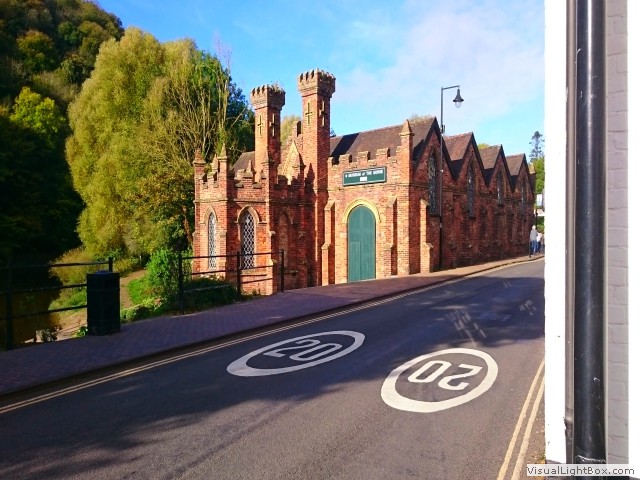 The first museum of the day is across the road from my digs- the ‘Museum of the Gorge’ occupying
an old gothic riverside warehouse, it offers an overview of the World Heritage Site using film,
photos and exhibits, including a 12m- long 3D model of a Royal visit to the town in 1796. Setting
off on the bike from the Taphouse, I re-crossed the Ironbridge and visited the Toll House on the
south side of the river, the little house was originally where people would have paid a toll to
cross the bridge, and the original prices are still displayed on the wall outside. I headed back
along the Severn Valley way until I reached Jackfield Tile Museum. I hear you say ‘tiles, what’s
interesting about tiles?’ During the areas heyday, it produced the majority of the World’s glazed
tiles. In Victorian times, every London underground station, every butcher, every hospital, schools, shops, police
stations, swimming baths (the list is endless) had its tiles made here, but it left the land with
a legacy. The extensive mineral deposits within the Gorge, chiefly limestone, iron, tile clay, and
coal, had been mined or quarried since medieval times, but the clay quarries at Jackfield took so much
material from the land, the process left the ground unstable and liable to landslides. Since 2014 a major
contractor was awarded the ‘Jackfield Stabilisation’ contract by Telford & Wrekin Council, its aim
is to rid the Jackfield area of its current unstable ground conditions.
The first museum of the day is across the road from my digs- the ‘Museum of the Gorge’ occupying
an old gothic riverside warehouse, it offers an overview of the World Heritage Site using film,
photos and exhibits, including a 12m- long 3D model of a Royal visit to the town in 1796. Setting
off on the bike from the Taphouse, I re-crossed the Ironbridge and visited the Toll House on the
south side of the river, the little house was originally where people would have paid a toll to
cross the bridge, and the original prices are still displayed on the wall outside. I headed back
along the Severn Valley way until I reached Jackfield Tile Museum. I hear you say ‘tiles, what’s
interesting about tiles?’ During the areas heyday, it produced the majority of the World’s glazed
tiles. In Victorian times, every London underground station, every butcher, every hospital, schools, shops, police
stations, swimming baths (the list is endless) had its tiles made here, but it left the land with
a legacy. The extensive mineral deposits within the Gorge, chiefly limestone, iron, tile clay, and
coal, had been mined or quarried since medieval times, but the clay quarries at Jackfield took so much
material from the land, the process left the ground unstable and liable to landslides. Since 2014 a major
contractor was awarded the ‘Jackfield Stabilisation’ contract by Telford & Wrekin Council, its aim
is to rid the Jackfield area of its current unstable ground conditions.
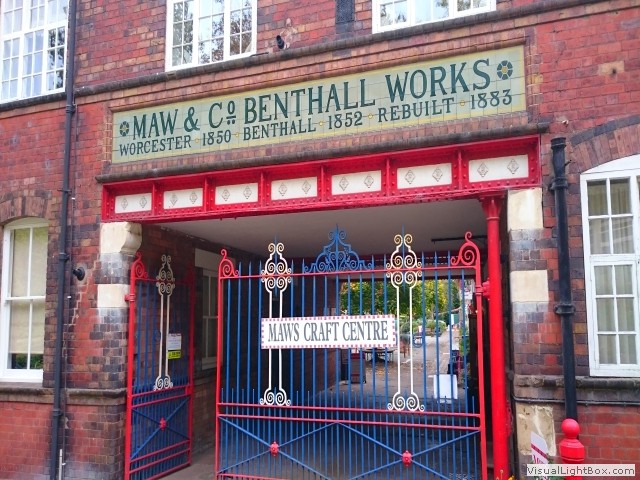 I passed Maws Craft Centre (originally the former tile factory of Maw & Co Benthall Works. The factory was
built in 1883 and closed its doors in 1970) and re-crossed the River Severn on the Coalport bridge
and headed for the next museums of the day; firstly the Coalport China Museum. The works manufactured
fine English chinaware between 1795 and 1926. The museum holds the official National Collections of
Caughley and Coalport china. Coalport YHA is right next to the museum and was part of the original
factory. Along the bottom lower part of the Shropshire canal is the base of the Hay inclined plain
and the coal tar tunnel (closed today). Now, it’s uphill on the Silkin Way back past Blists village
and left at Madeley windmill and onto Rough Park Way heading east (and ‘Rough’ is an appropriate
name for the path, not to be ridden on a road bike). The path ends up near the viaduct crossing the
upper furnace pools which supplied the water powered blowing devices for the famous Darby blast
furnaces (just over the wall). To the right are the former homes to the Darby family. Dale House,
built in 1717, and Rosehill House built in 1738, both sit on the hillside overlooking
Coalbrookdale. Rosedale house is open to the public and is decorated with period furnishings,
minded by actors dressed in Victorian era costumes.
I passed Maws Craft Centre (originally the former tile factory of Maw & Co Benthall Works. The factory was
built in 1883 and closed its doors in 1970) and re-crossed the River Severn on the Coalport bridge
and headed for the next museums of the day; firstly the Coalport China Museum. The works manufactured
fine English chinaware between 1795 and 1926. The museum holds the official National Collections of
Caughley and Coalport china. Coalport YHA is right next to the museum and was part of the original
factory. Along the bottom lower part of the Shropshire canal is the base of the Hay inclined plain
and the coal tar tunnel (closed today). Now, it’s uphill on the Silkin Way back past Blists village
and left at Madeley windmill and onto Rough Park Way heading east (and ‘Rough’ is an appropriate
name for the path, not to be ridden on a road bike). The path ends up near the viaduct crossing the
upper furnace pools which supplied the water powered blowing devices for the famous Darby blast
furnaces (just over the wall). To the right are the former homes to the Darby family. Dale House,
built in 1717, and Rosehill House built in 1738, both sit on the hillside overlooking
Coalbrookdale. Rosedale house is open to the public and is decorated with period furnishings,
minded by actors dressed in Victorian era costumes.
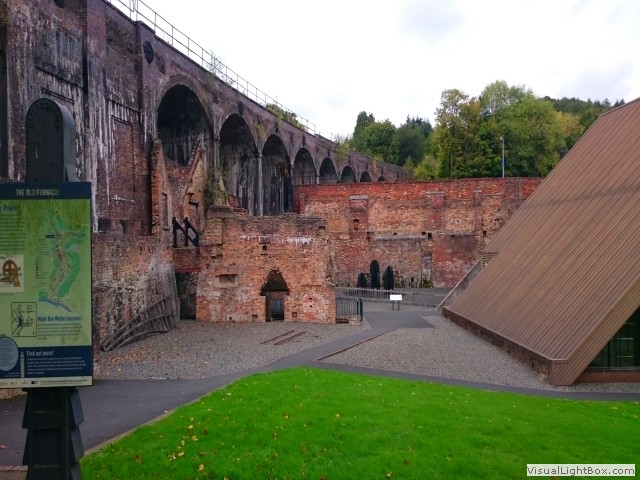 Just under one of the arches of the viaduct is the entrance to the ‘Museum of Iron’ with the
original furnaces to the left covered over with a triangular building. The furnace was originally
supplied forced air by bellows then later by a cylinder blower, both water powered. The buildings
surrounding the furnaces are magnificent, which is good because inside the museum of iron was quite
disappointing. Now it’s downhill onto the NCR45 to the Green Wood Centre, there sits the tranquil
Green Wood Café on the site of the former Coalbrookdale station (still on a live railway line to
Ironbridge B power station, so there is hope it may return). Here I had a lovely coffee before
finishing my journey back at the Swan Taphouse hotel. The day didn’t disappoint, even if you’re not a
museum buff, the Gorge museums are an incredible Victorian time capsule unrivalled in quantity
and quality anywhere else in the UK.
Just under one of the arches of the viaduct is the entrance to the ‘Museum of Iron’ with the
original furnaces to the left covered over with a triangular building. The furnace was originally
supplied forced air by bellows then later by a cylinder blower, both water powered. The buildings
surrounding the furnaces are magnificent, which is good because inside the museum of iron was quite
disappointing. Now it’s downhill onto the NCR45 to the Green Wood Centre, there sits the tranquil
Green Wood Café on the site of the former Coalbrookdale station (still on a live railway line to
Ironbridge B power station, so there is hope it may return). Here I had a lovely coffee before
finishing my journey back at the Swan Taphouse hotel. The day didn’t disappoint, even if you’re not a
museum buff, the Gorge museums are an incredible Victorian time capsule unrivalled in quantity
and quality anywhere else in the UK.
Day 3- Ironbridge to Bridgnorth (9 miles), then Kidderminster (train)
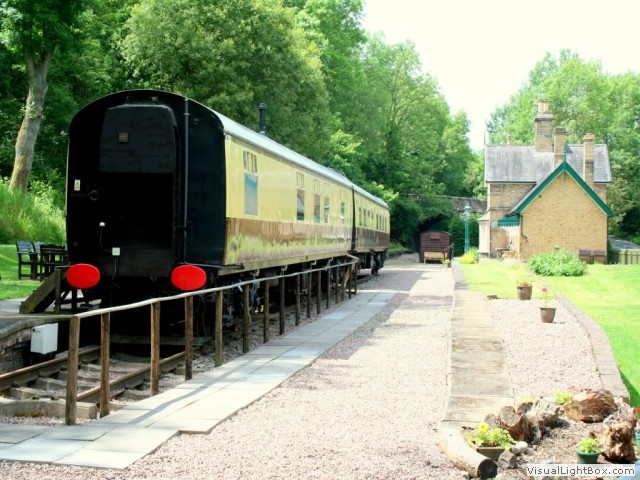 It rained heavily during the night and the ground was damp when I set off. At Coalport the old
station now houses holiday homes in refurbished railway carriages. Here is the entrance to the
permissive NCR45 cycle path which shuts during a few months over winter. The path runs alongside
the River Severn, following the path of the old GWR Severn Valley line, and I have to say, it was
a sheer delight to ride along (apart from a moderate sprinkling of potholes). The sun created
dancing shadows through the trees, and there were no sounds except for buzzards crying high in
the sky and blackbirds singing their hearts out in the bushes, as if the World was going to end. I
almost rode straight through Linley Halt railway station, cocooned in my own World of thoughts.
After passing through bridgnorth golf club, the railway trail ends, and goes back
onto the road, but that doesn’t stop the views as I climb high above the river.
It rained heavily during the night and the ground was damp when I set off. At Coalport the old
station now houses holiday homes in refurbished railway carriages. Here is the entrance to the
permissive NCR45 cycle path which shuts during a few months over winter. The path runs alongside
the River Severn, following the path of the old GWR Severn Valley line, and I have to say, it was
a sheer delight to ride along (apart from a moderate sprinkling of potholes). The sun created
dancing shadows through the trees, and there were no sounds except for buzzards crying high in
the sky and blackbirds singing their hearts out in the bushes, as if the World was going to end. I
almost rode straight through Linley Halt railway station, cocooned in my own World of thoughts.
After passing through bridgnorth golf club, the railway trail ends, and goes back
onto the road, but that doesn’t stop the views as I climb high above the river.
The route now drops back down to the riverside, but have no fear (I thought); there’s a cliff railway to take me back up the top of the hill. The river divides Bridgnorth town into ‘a high town’ and ‘a low town’; the two being linked with seven sets of ancient donkey steps and a Victorian funicular- the Bridgnorth Cliff Railway. Unfortunately when I got there, no cycles are allowed on the cliff railway, and I could have ridden around and up on the road, but I chose the donkey steps and so carried my bike up every “eeyore” step. ‘Stoneway Steps’ were the route for horses and donkeys before an alternate road route was developed. Part way up the steps is the ‘Theatre on the Steps’, the structure is supposed to have a residing ghost, who presents with paranormal smells and voices. Today, it hosted three youths smoking dope (nothing paranormal about that smell) who were quite shocked to see me (I guess no-one is stupid enough to walk up the cliff this way and so they thought they wouldn’t be disturbed). At the top is Bridgnorth Castle, no ramparts or towers, just one big scary rock emanating from the ground, more like the famous drunk statue leaning on a lamppost (only there isn’t any lamppost supporting it). Damage during the Civil War caused the tower to lean at an angle of 15 degrees, four times the lean of the leaning tower of Pisa (now there’s a fact for the pub quiz).
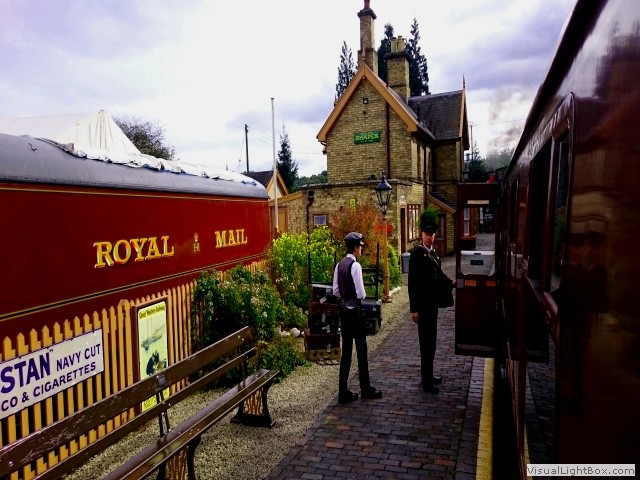 Across the valley was the northern terminus of the Severn Valley heritage railway which was
going to take me back to my start destination. There was much restoration and improvement
works going on at Bridgnorth station, but that didn’t detract from the magnetism of the
attraction. Besides the steam locomotive at the front of my train, there were two other
engines in steam and a diesel shunter bussing around. We were waiting for the northbound
train to arrive, so we could depart on the largely single track route. The journey hardly
ever leaves the side of the River Severn and soon we arrived at the first stop; Arley
Station (pictured above). Arley has two platforms with a passing loop, and again we had to wait until
the northbound train arrived before we could depart, that continued in most of the
stations along the route. Now, that’s not meant to be criticism, for rarely have I seen a
full time table of contraflow steam trains on a heritage railway, with each
station with its own station master, ticket staff, maintenance staff, and each platform
Across the valley was the northern terminus of the Severn Valley heritage railway which was
going to take me back to my start destination. There was much restoration and improvement
works going on at Bridgnorth station, but that didn’t detract from the magnetism of the
attraction. Besides the steam locomotive at the front of my train, there were two other
engines in steam and a diesel shunter bussing around. We were waiting for the northbound
train to arrive, so we could depart on the largely single track route. The journey hardly
ever leaves the side of the River Severn and soon we arrived at the first stop; Arley
Station (pictured above). Arley has two platforms with a passing loop, and again we had to wait until
the northbound train arrived before we could depart, that continued in most of the
stations along the route. Now, that’s not meant to be criticism, for rarely have I seen a
full time table of contraflow steam trains on a heritage railway, with each
station with its own station master, ticket staff, maintenance staff, and each platform
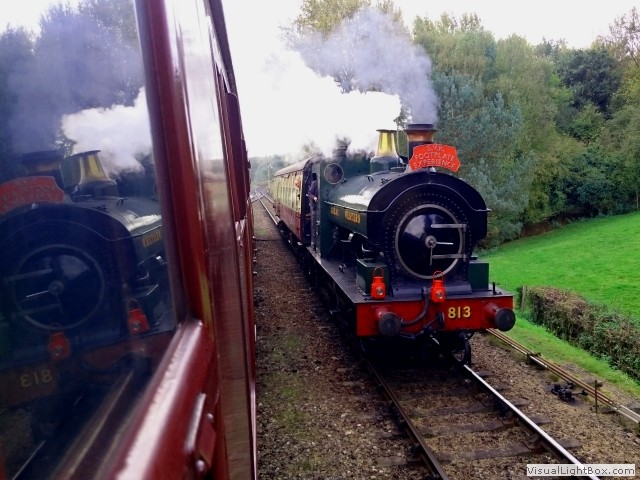 having their own dispatcher or sometimes two or three when the station was on a curve.
I barely sat down for any of the journey, looking out of the window on the left and then moving
to the right, with the customary coal ash in the eyes, I was like a hyperactive kid on candy.
There must have been hundreds of volunteer staff working on the day and I can
only imagine this was what a main line route would’ve been like back before the big axe
fell. Near Kidderminster I couldn’t believe my eyes when I looked out of the window and
saw a rhino. At first, I thought it was a model until it began to move, then I realised I
was near the ‘West Midlands Safari Park’. It was an excellent experience and well worth the money.
having their own dispatcher or sometimes two or three when the station was on a curve.
I barely sat down for any of the journey, looking out of the window on the left and then moving
to the right, with the customary coal ash in the eyes, I was like a hyperactive kid on candy.
There must have been hundreds of volunteer staff working on the day and I can
only imagine this was what a main line route would’ve been like back before the big axe
fell. Near Kidderminster I couldn’t believe my eyes when I looked out of the window and
saw a rhino. At first, I thought it was a model until it began to move, then I realised I
was near the ‘West Midlands Safari Park’. It was an excellent experience and well worth the money.
What a great day, what a great few days, not many miles on the bike, but I must have walked as many on foot. Why the fascination with the Victorian era? It was a period of industrialisation and political revolution, compulsory education, the dominance of the novel, and the invention of the train. Above all, it was an age that was like no other in time, an epoch of radical technological progress and visionary reform, shaping the future in which we now live. How can one not be fascinated by the Victorians and the propagation of the Industrial revolution?
-
Gallery
 Why not have a look at the gallery relating to this ride. Click the image or the title.
Why not have a look at the gallery relating to this ride. Click the image or the title. -
Stourbridge shuttle bus
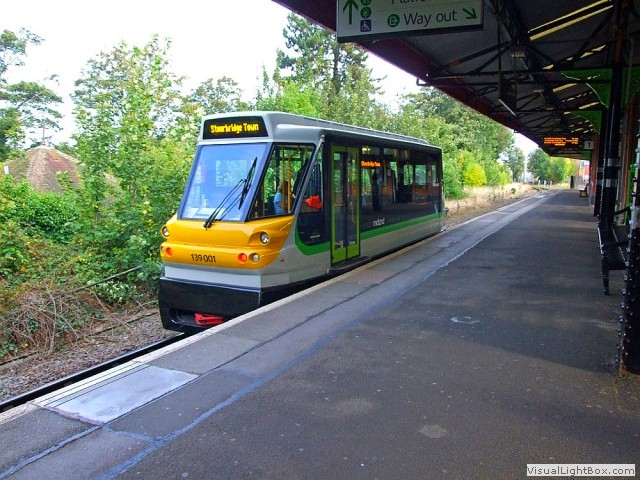 People power brought the Stourbridge Town branch line back from the modern axe. Road busses replaced the
trains on this one mile branch line in 2008, but the people made such a protest a little didy rail
shuttle bus was reinstated on the line and still runs today.
People power brought the Stourbridge Town branch line back from the modern axe. Road busses replaced the
trains on this one mile branch line in 2008, but the people made such a protest a little didy rail
shuttle bus was reinstated on the line and still runs today. -
Lee Dingle bridge
 Soaring high above the Coalport Road, the Lee Dingle bridge was built circa 1859 to carry
coal on a tramway from the Meadow Pit Colliery to the Blists Hill Ironworks. The distinctive
wrought iron lattice work remains much as it was when it was first built.
Soaring high above the Coalport Road, the Lee Dingle bridge was built circa 1859 to carry
coal on a tramway from the Meadow Pit Colliery to the Blists Hill Ironworks. The distinctive
wrought iron lattice work remains much as it was when it was first built. -
The Hay Inclined plane
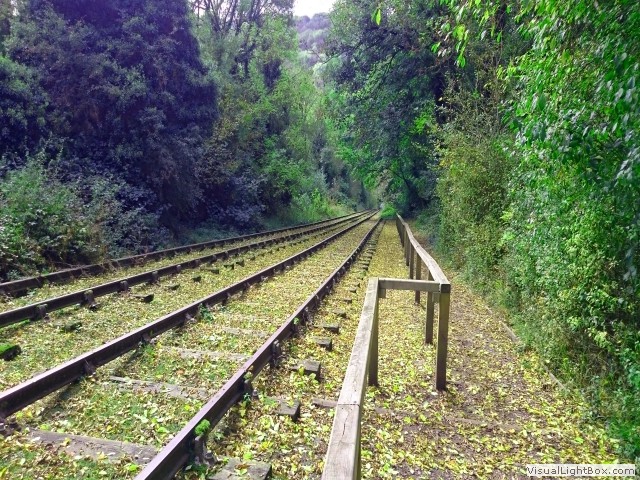 The inclined plane was in operation for over one hundred years closing in 1894. Twin
railway tracks were laid down the hill, and box shaped tub boats ascended and
descended the inclined plane on cradled wheeled bogies. Only the top part was powered by
a small steam engine, the main motion was worked by counterbalancing the up and down boat weights.
The inclined plane was in operation for over one hundred years closing in 1894. Twin
railway tracks were laid down the hill, and box shaped tub boats ascended and
descended the inclined plane on cradled wheeled bogies. Only the top part was powered by
a small steam engine, the main motion was worked by counterbalancing the up and down boat weights. -
Ironbridge
 The world's first iron bridge was erected over the River Severn in
1781. This pioneering structure marked a turning point in design and engineering.
The world's first iron bridge was erected over the River Severn in
1781. This pioneering structure marked a turning point in design and engineering. -
Merrythought of Ironbridge
 Merrythought of Ironbridge is a toy manufacturing company established in the UK in 1930.
The company specialised in soft toys, especially teddy bears, and is the last remaining
British teddy bear factory to still make its products in Britain.
Merrythought of Ironbridge is a toy manufacturing company established in the UK in 1930.
The company specialised in soft toys, especially teddy bears, and is the last remaining
British teddy bear factory to still make its products in Britain. -
Jackfield Tile Museum
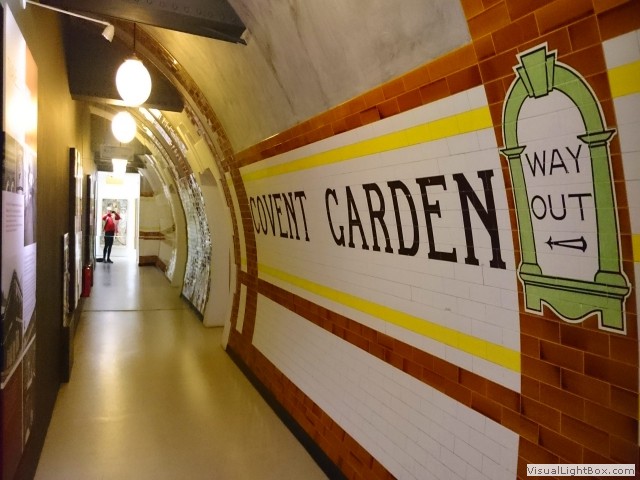 Jackfield is one of the oldest known ceramic production centres in the World, the tile museum
is in the former Craven Dunnill and Co works. Craven Dunnill left the buildings in the 50’s
and returned when it was made a museum in 1989, it still produces tiles today.
Jackfield is one of the oldest known ceramic production centres in the World, the tile museum
is in the former Craven Dunnill and Co works. Craven Dunnill left the buildings in the 50’s
and returned when it was made a museum in 1989, it still produces tiles today. -
Jackfield Tragedy
 Two young twins were playing on the Craven Dunnhill spoil heaps near the river, when heavy
rain caused the bank to collapse into the river taking the two boys with it. To this day
young children can be heard crying in the area where they were first taken.
Two young twins were playing on the Craven Dunnhill spoil heaps near the river, when heavy
rain caused the bank to collapse into the river taking the two boys with it. To this day
young children can be heard crying in the area where they were first taken. -
Darby furnace Coalbrookdale
 Charcoal was used to smelt iron but was becoming too expensive, coal was plentiful but made
the iron brittle. In 1709 Abraham Darby finally succeeded in smelting iron using coke (coal
with most of the impurities burnt off). This technological achievement allowed a major expansion
of the iron trade, and ultimately it helped lead to the Industrial Revolution.
Charcoal was used to smelt iron but was becoming too expensive, coal was plentiful but made
the iron brittle. In 1709 Abraham Darby finally succeeded in smelting iron using coke (coal
with most of the impurities burnt off). This technological achievement allowed a major expansion
of the iron trade, and ultimately it helped lead to the Industrial Revolution. -
Ironbridge 'B' power station
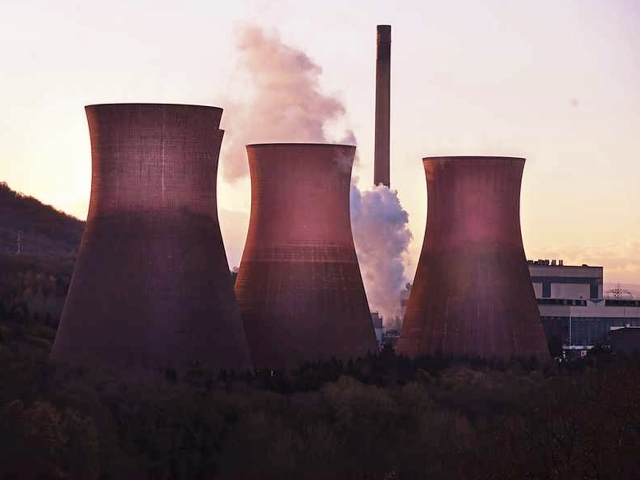 Some see the four cooling towers at Ironbridge 'B' power station as an eyesore in the beautiful
Severn Gorge Valley, but despite its early opposition the power station was built anyway. Indeed,
hundreds of years prior, they may have said the same about 'Darby’s' dragon fire spitting furnaces,
spewing out noxious fumes, and pouring viscous choking smoke into the atmosphere.
Now, some fifty years after the Chief Engineer flipped the switch to connect the inaugural Ironbridge B to the
Some see the four cooling towers at Ironbridge 'B' power station as an eyesore in the beautiful
Severn Gorge Valley, but despite its early opposition the power station was built anyway. Indeed,
hundreds of years prior, they may have said the same about 'Darby’s' dragon fire spitting furnaces,
spewing out noxious fumes, and pouring viscous choking smoke into the atmosphere.
Now, some fifty years after the Chief Engineer flipped the switch to connect the inaugural Ironbridge B to the
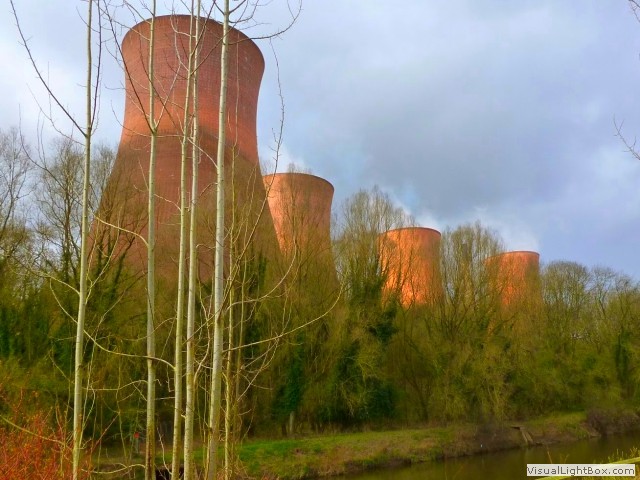 National Grid, Mike Smith (original chief engineer now retired) returned to the site in 2015 to turn the
power off for the last time. What now? Well, some are calling for the cooling towers
to be preserved, in the hope future generations will look back in hundreds of year’s time and
ask, “did they really produce their energy by burning fossil fuels?”
National Grid, Mike Smith (original chief engineer now retired) returned to the site in 2015 to turn the
power off for the last time. What now? Well, some are calling for the cooling towers
to be preserved, in the hope future generations will look back in hundreds of year’s time and
ask, “did they really produce their energy by burning fossil fuels?” -
Bridgnorth cliff railway
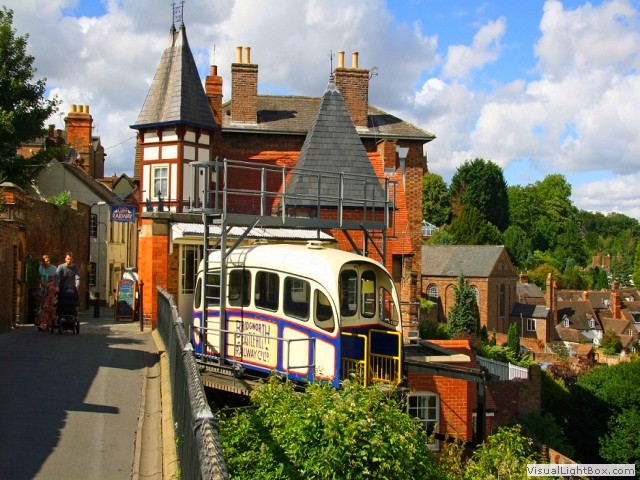 Most cliff railways were built at seaside resorts, but bridgnorth wanted their own funicular
railway. So plans were finally accepted for a route from the bottom of Stoneway Steps to the
end of Castle Walk and consequently a company entitled ‘The bridgnorth Castle Hill Railway
Company Ltd’ was registered in 1891, soon after the railway was built.
Most cliff railways were built at seaside resorts, but bridgnorth wanted their own funicular
railway. So plans were finally accepted for a route from the bottom of Stoneway Steps to the
end of Castle Walk and consequently a company entitled ‘The bridgnorth Castle Hill Railway
Company Ltd’ was registered in 1891, soon after the railway was built. -
Rifle Range Halt
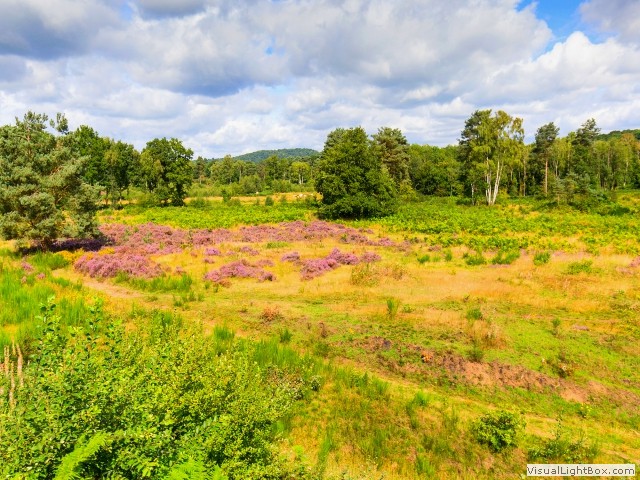 The rifle range which gave the halt its name was situated on the open heath land near the
West Midlands Safari Park. During WW1 it was used mainly by
volunteers from the Yeomanry. Despite the halts closure in 1920, the area retained a military
connection during WW2, holding some 7000 American troops of the US Army VIII Corps.
The rifle range which gave the halt its name was situated on the open heath land near the
West Midlands Safari Park. During WW1 it was used mainly by
volunteers from the Yeomanry. Despite the halts closure in 1920, the area retained a military
connection during WW2, holding some 7000 American troops of the US Army VIII Corps. -
West Midland Safari Park
 The park was opened by founder David Chorley and Jimmy Chipperfield in 1973 and at the
time, it hosted a few ex-circus animals, since then West Midland Safari Park is home to some
of the world's most beautiful and endangered exotic animal species.
The park was opened by founder David Chorley and Jimmy Chipperfield in 1973 and at the
time, it hosted a few ex-circus animals, since then West Midland Safari Park is home to some
of the world's most beautiful and endangered exotic animal species.

 People power brought the Stourbridge Town branch line back from the modern axe. Road busses replaced the
trains on this one mile branch line in 2008, but the people made such a protest a little didy rail
shuttle bus was reinstated on the line and still runs today.
People power brought the Stourbridge Town branch line back from the modern axe. Road busses replaced the
trains on this one mile branch line in 2008, but the people made such a protest a little didy rail
shuttle bus was reinstated on the line and still runs today.  Soaring high above the Coalport Road, the Lee Dingle bridge was built circa 1859 to carry
coal on a tramway from the Meadow Pit Colliery to the Blists Hill Ironworks. The distinctive
wrought iron lattice work remains much as it was when it was first built.
Soaring high above the Coalport Road, the Lee Dingle bridge was built circa 1859 to carry
coal on a tramway from the Meadow Pit Colliery to the Blists Hill Ironworks. The distinctive
wrought iron lattice work remains much as it was when it was first built. The inclined plane was in operation for over one hundred years closing in 1894. Twin
railway tracks were laid down the hill, and box shaped tub boats ascended and
descended the inclined plane on cradled wheeled bogies. Only the top part was powered by
a small steam engine, the main motion was worked by counterbalancing the up and down boat weights.
The inclined plane was in operation for over one hundred years closing in 1894. Twin
railway tracks were laid down the hill, and box shaped tub boats ascended and
descended the inclined plane on cradled wheeled bogies. Only the top part was powered by
a small steam engine, the main motion was worked by counterbalancing the up and down boat weights.  The world's first iron bridge was erected over the River Severn in
1781. This pioneering structure marked a turning point in design and engineering.
The world's first iron bridge was erected over the River Severn in
1781. This pioneering structure marked a turning point in design and engineering. Merrythought of Ironbridge is a toy manufacturing company established in the UK in 1930.
The company specialised in soft toys, especially teddy bears, and is the last remaining
British teddy bear factory to still make its products in Britain.
Merrythought of Ironbridge is a toy manufacturing company established in the UK in 1930.
The company specialised in soft toys, especially teddy bears, and is the last remaining
British teddy bear factory to still make its products in Britain. Jackfield is one of the oldest known ceramic production centres in the World, the tile museum
is in the former Craven Dunnill and Co works. Craven Dunnill left the buildings in the 50’s
and returned when it was made a museum in 1989, it still produces tiles today.
Jackfield is one of the oldest known ceramic production centres in the World, the tile museum
is in the former Craven Dunnill and Co works. Craven Dunnill left the buildings in the 50’s
and returned when it was made a museum in 1989, it still produces tiles today. Two young twins were playing on the Craven Dunnhill spoil heaps near the river, when heavy
rain caused the bank to collapse into the river taking the two boys with it. To this day
young children can be heard crying in the area where they were first taken.
Two young twins were playing on the Craven Dunnhill spoil heaps near the river, when heavy
rain caused the bank to collapse into the river taking the two boys with it. To this day
young children can be heard crying in the area where they were first taken.  Charcoal was used to smelt iron but was becoming too expensive, coal was plentiful but made
the iron brittle. In 1709 Abraham Darby finally succeeded in smelting iron using coke (coal
with most of the impurities burnt off). This technological achievement allowed a major expansion
of the iron trade, and ultimately it helped lead to the Industrial Revolution.
Charcoal was used to smelt iron but was becoming too expensive, coal was plentiful but made
the iron brittle. In 1709 Abraham Darby finally succeeded in smelting iron using coke (coal
with most of the impurities burnt off). This technological achievement allowed a major expansion
of the iron trade, and ultimately it helped lead to the Industrial Revolution.  Some see the four cooling towers at Ironbridge 'B' power station as an eyesore in the beautiful
Severn Gorge Valley, but despite its early opposition the power station was built anyway. Indeed,
hundreds of years prior, they may have said the same about 'Darby’s' dragon fire spitting furnaces,
spewing out noxious fumes, and pouring viscous choking smoke into the atmosphere.
Now, some fifty years after the Chief Engineer flipped the switch to connect the inaugural Ironbridge B to the
Some see the four cooling towers at Ironbridge 'B' power station as an eyesore in the beautiful
Severn Gorge Valley, but despite its early opposition the power station was built anyway. Indeed,
hundreds of years prior, they may have said the same about 'Darby’s' dragon fire spitting furnaces,
spewing out noxious fumes, and pouring viscous choking smoke into the atmosphere.
Now, some fifty years after the Chief Engineer flipped the switch to connect the inaugural Ironbridge B to the
 National Grid, Mike Smith (original chief engineer now retired) returned to the site in 2015 to turn the
power off for the last time. What now? Well, some are calling for the cooling towers
to be preserved, in the hope future generations will look back in hundreds of year’s time and
ask, “did they really produce their energy by burning fossil fuels?”
National Grid, Mike Smith (original chief engineer now retired) returned to the site in 2015 to turn the
power off for the last time. What now? Well, some are calling for the cooling towers
to be preserved, in the hope future generations will look back in hundreds of year’s time and
ask, “did they really produce their energy by burning fossil fuels?” Most cliff railways were built at seaside resorts, but bridgnorth wanted their own funicular
railway. So plans were finally accepted for a route from the bottom of Stoneway Steps to the
end of Castle Walk and consequently a company entitled ‘The bridgnorth Castle Hill Railway
Company Ltd’ was registered in 1891, soon after the railway was built.
Most cliff railways were built at seaside resorts, but bridgnorth wanted their own funicular
railway. So plans were finally accepted for a route from the bottom of Stoneway Steps to the
end of Castle Walk and consequently a company entitled ‘The bridgnorth Castle Hill Railway
Company Ltd’ was registered in 1891, soon after the railway was built. The rifle range which gave the halt its name was situated on the open heath land near the
West Midlands Safari Park. During WW1 it was used mainly by
volunteers from the Yeomanry. Despite the halts closure in 1920, the area retained a military
connection during WW2, holding some 7000 American troops of the US Army VIII Corps.
The rifle range which gave the halt its name was situated on the open heath land near the
West Midlands Safari Park. During WW1 it was used mainly by
volunteers from the Yeomanry. Despite the halts closure in 1920, the area retained a military
connection during WW2, holding some 7000 American troops of the US Army VIII Corps. The park was opened by founder David Chorley and Jimmy Chipperfield in 1973 and at the
time, it hosted a few ex-circus animals, since then West Midland Safari Park is home to some
of the world's most beautiful and endangered exotic animal species.
The park was opened by founder David Chorley and Jimmy Chipperfield in 1973 and at the
time, it hosted a few ex-circus animals, since then West Midland Safari Park is home to some
of the world's most beautiful and endangered exotic animal species.